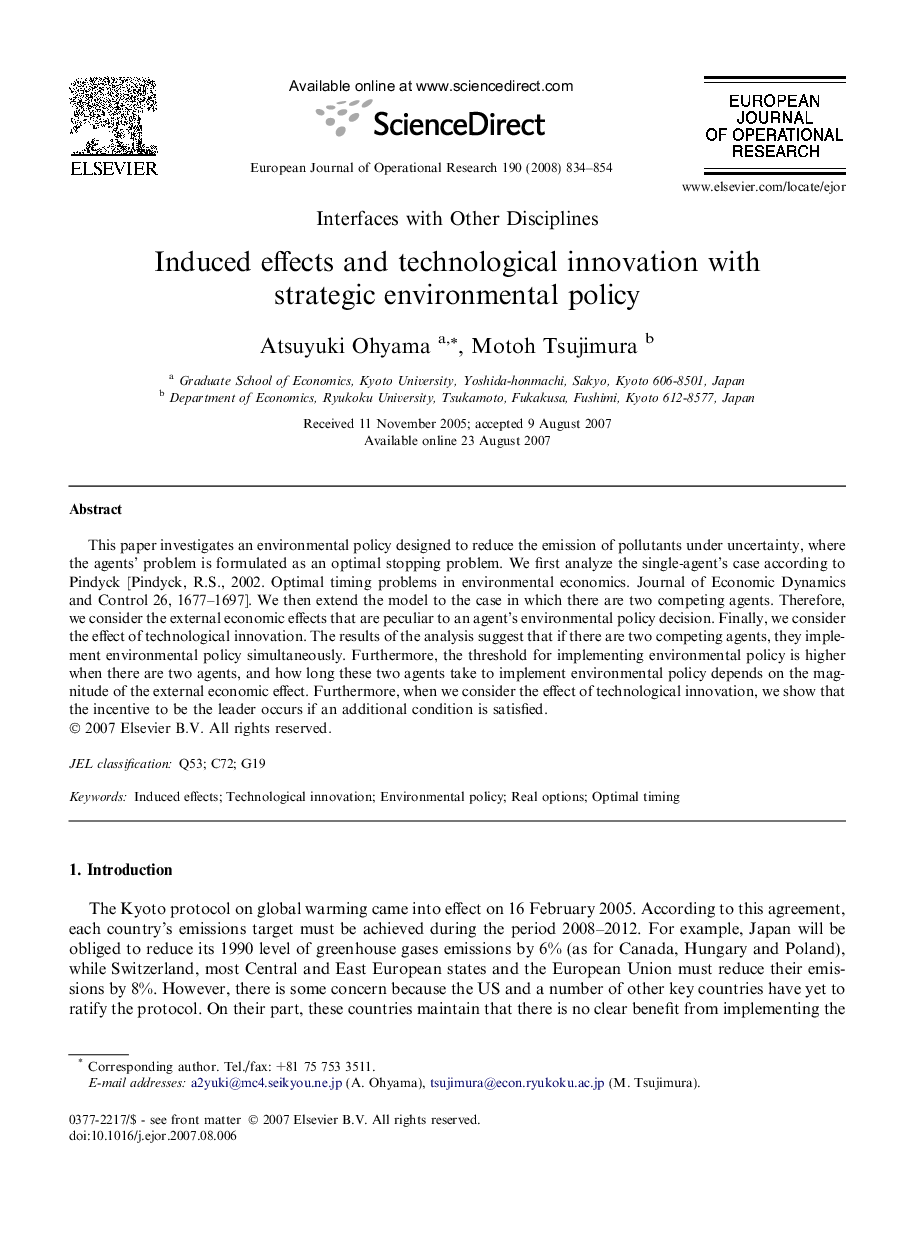| Article ID | Journal | Published Year | Pages | File Type |
|---|---|---|---|---|
| 482804 | European Journal of Operational Research | 2008 | 21 Pages |
This paper investigates an environmental policy designed to reduce the emission of pollutants under uncertainty, where the agents’ problem is formulated as an optimal stopping problem. We first analyze the single-agent’s case according to Pindyck [Pindyck, R.S., 2002. Optimal timing problems in environmental economics. Journal of Economic Dynamics and Control 26, 1677–1697]. We then extend the model to the case in which there are two competing agents. Therefore, we consider the external economic effects that are peculiar to an agent’s environmental policy decision. Finally, we consider the effect of technological innovation. The results of the analysis suggest that if there are two competing agents, they implement environmental policy simultaneously. Furthermore, the threshold for implementing environmental policy is higher when there are two agents, and how long these two agents take to implement environmental policy depends on the magnitude of the external economic effect. Furthermore, when we consider the effect of technological innovation, we show that the incentive to be the leader occurs if an additional condition is satisfied.
